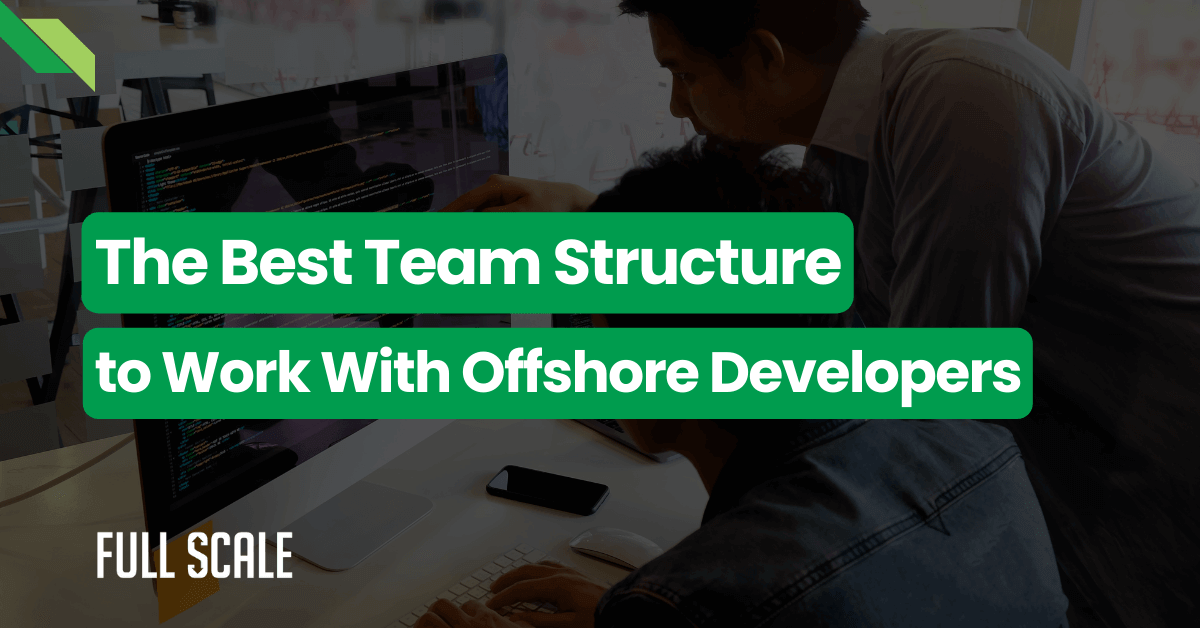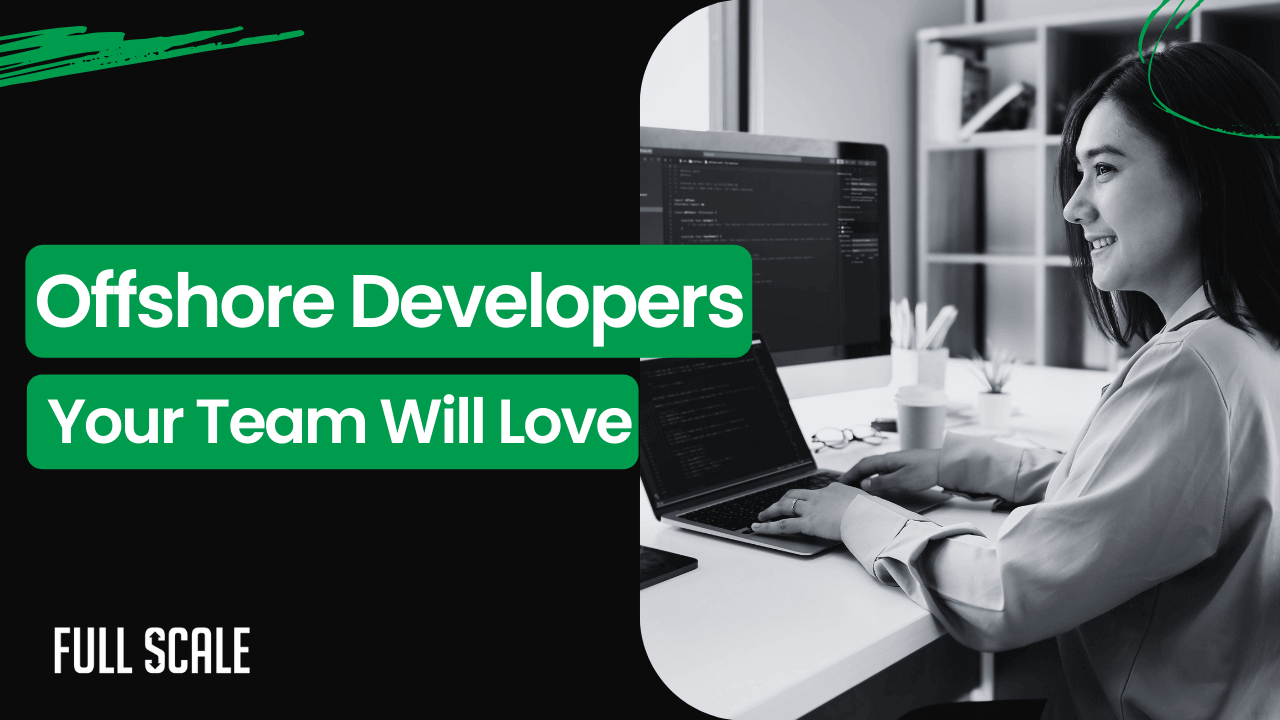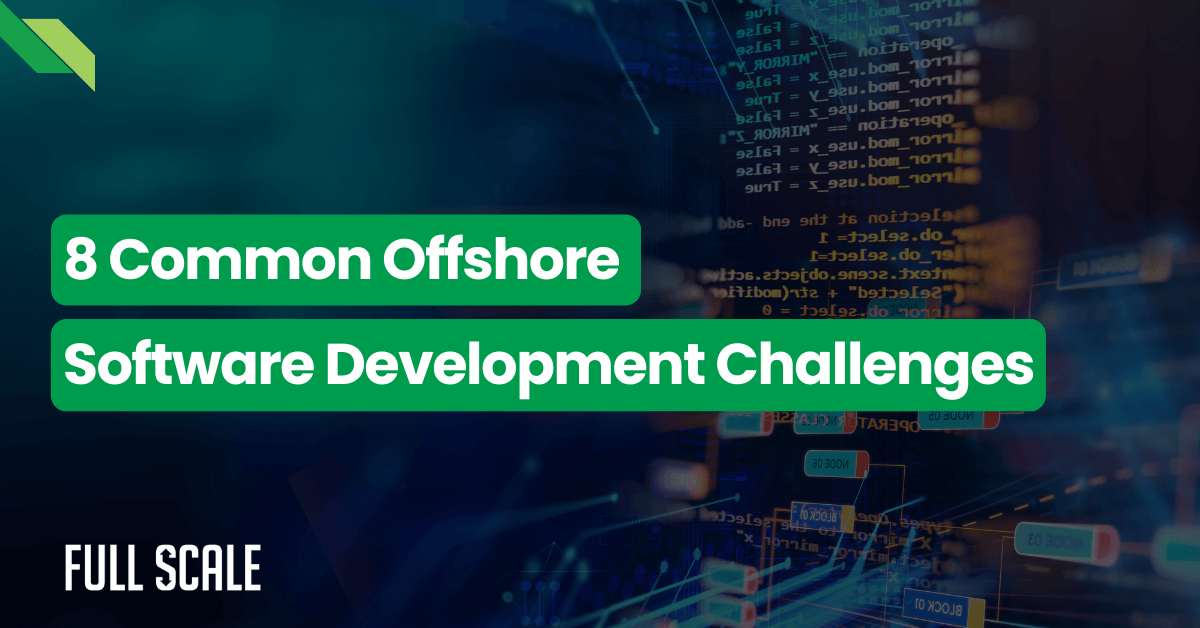Last Updated on 2024-10-28
The cloud computing landscape has fundamentally transformed how businesses build and deploy applications.
In 2024, companies face a critical decision between serverless and microservices architectures. This choice impacts everything from development speed to operational costs.
According to Gartner’s 2024 Cloud Strategy Report, 75% of enterprise-generated data will be created and processed outside traditional centralized data centers by 2025. Of those companies, 65% struggle with choosing between serverless and microservices approaches.
The stakes are high. Organizations that choose the right software architecture for their needs see up to 40% reduction in development costs and 60% faster time to market. However, making the wrong choice can lead to technical debt and scalability challenges.
When evaluating serverless vs. microservices architecture, businesses must consider their entire technological ecosystem.
This decision becomes even more critical when transitioning from monolithic vs. microservices vs. serverless approaches, as each architecture brings distinct advantages and challenges.
Let’s explore how to make the right architectural choice for your business needs.
Understanding Modern Cloud Architecture Evolution
The journey from monolithic applications to modern distributed systems marks a fundamental shift in how we build software. This evolution responds to increasing demands for scalability, flexibility, and rapid deployment.
Traditional monolithic applications bundle all functionality into a single codebase. While this works for simpler applications, it creates challenges as systems grow more complex. Companies struggle with scaling, deployment speed, and maintenance costs.
Understanding the transition from monolith vs. microservices vs. serverless architectures helps organizations make informed decisions about their modernization journey. This evolution continues as new patterns emerge, including sophisticated approaches to choreography vs. orchestration in serverless microservices implementations.
As we move forward, understanding these architectural choices becomes crucial for business success. Let’s examine each approach in detail.
What is Serverless?
Serverless computing revolutionizes how businesses deploy and manage applications. This architecture eliminates traditional infrastructure management concerns, letting companies focus on core business logic.

The comparison between serverless computing vs. microservices has become increasingly relevant as organizations evaluate cloud options. In 2023, the serverless market reached $20.5 billion, with a projected growth rate of 24.1% through 2028.
Key Components
- Function-as-a-Service (FaaS) platforms like AWS Lambda, Azure Functions, and Google Cloud Functions
- Event-driven execution model
- Container-based execution options, highlighting the growing serverless vs. containers and microservices debate
- Automatic scaling and resource management
- Pay-per-use pricing structure
Business Impact
Organizations using serverless architecture report:
- 40% reduction in operational costs
- 60% faster deployment cycles
- Zero infrastructure management overhead
The serverless approach fundamentally changes how businesses think about application development and deployment. Let’s examine how microservices offer a different solution to similar challenges.
Defining Microservices
When comparing microservices vs. serverless architecture, it’s crucial to understand how microservices operate as an architectural style. This approach breaks down applications into independent, specialized services that work together to create comprehensive solutions.

Recent studies show that 85% of large organizations now use microservices, with a 75% satisfaction rate among adopters. This architecture style particularly suits businesses requiring fine-grained control over their applications.
The evolution from monolithic vs. microservices vs. serverless approaches has shown that microservices offer particular advantages for complex applications. Understanding microservices vs. serverless functions helps organizations make informed architectural decisions.
Core Principles
- Independent service deployment
- Decentralized data management
- Service-specific technologies
- API-based communication
- Business-domain alignment
Organizational Benefits
Companies implementing microservices achieve:
- 50% improvement in team autonomy
- 45% faster feature delivery
- 65% better scalability control
Implementation Patterns
- Service mesh implementation
- Choreography vs. orchestration in serverless microservices deployment
- API gateway integration
- Container orchestration solutions
Understanding these foundational architectures sets the stage for comparing their capabilities. Let’s explore how they differ and what that means for your business.
What is the Difference Between Serverless and Microservices?
When examining serverless functions vs. microservices, organizations must consider multiple factors affecting their application lifecycle. Understanding these differences helps inform strategic technology decisions.
| Feature | Serverless | Microservices |
| Infrastructure Management | Provider managed | Self-managed |
| Initial Costs | Low | Medium to High |
| Ongoing Maintenance | Minimal | Significant |
| Scalability | Automatic | Manual/Semi-automatic |
| Development Complexity | Lower | Higher |
| Vendor Lock-in | High | Low |
| Performance Control | Limited | Extensive |
| Team Structure | Function-based | Service-based |
This comparison highlights fundamental differences that impact business operations. Let’s explore each aspect in detail.
Infrastructure and Management
When comparing serverless architecture vs. microservices, infrastructure management stands as a key differentiator:
Serverless: Cloud providers handle all server management, reducing operational overhead but limiting control.
Microservices: Organizations maintain complete infrastructure control, requiring more resources but enabling customization.
Cost Structures
Serverless: Pay-per-execution model minimizes idle costs. Average savings reach 40% compared to traditional hosting.
Microservices: Fixed infrastructure costs plus variable expenses. Requires careful capacity planning and optimization.
Scaling and Performance
Serverless: Automatic scaling handles traffic spikes efficiently. Response times average 50-300ms, including cold starts.
Microservices: Manual scaling offers precise control. Consistent response times of 10-100ms with proper configuration.
Development and Deployment
Serverless: Faster deployment cycles with focused function development. Reduced DevOps requirements.
Microservices: More complex deployment processes but greater flexibility in technology choices.
Deployment Models
- Traditional Deployment: Understanding monolith vs. microservices vs. serverless deployment patterns
- Container Strategy: Evaluating serverless vs. containers vs. microservices for optimal resource usage
- Orchestration Needs: Considering choreography vs. orchestration in serverless microservices implementations
- Scaling Patterns: Comparing serverless computing vs. microservices scaling capabilities
Integration Patterns
Understanding microservices vs. serverless functions integration approaches:
- API Gateway implementations
- Event-driven communications
- Service mesh considerations
- Data consistency patterns
Understanding these differences guides architecture selection. Let’s explore specific use cases where each approach excels.
Serverless and Microservices Use Cases
When evaluating serverless vs. microservices architecture for specific business scenarios, real-world applications provide valuable insights. Let’s examine how different industries leverage both approaches.
Serverless Success Scenarios
Understanding where serverless computing vs. microservices provides optimal value helps inform architectural decisions. According to AWS’s 2023 Customer Success Report, businesses implementing serverless architecture see significant improvements in scalability and cost efficiency.
E-commerce Operations
E-commerce platforms particularly benefit from serverless architecture’s ability to handle variable loads. Amazon Web Services reports that online retailers using Lambda functions show remarkable performance improvements.
Implementation Areas:
- Real-time inventory updates
- Order processing workflows
- Price calculation engines
- Shopping cart management
Success Metrics (Source: AWS Retail Reference Architecture 2023):
- 70% cost reduction in non-peak periods
- 300% elastic scaling during sales events
- 99.9% uptime maintenance
Financial Services
Financial institutions leverage serverless architecture for transaction-heavy operations. According to Microsoft Azure’s Financial Services Customer Stories, banks and fintech companies achieve significant operational benefits.
Implementation Areas:
- Payment processing systems
- Fraud detection algorithms
- Transaction logging
- Account verification
Performance Data (Source: Azure Financial Services Benchmark 2024):
- 200ms average response times
- 45% operational cost reduction
- 99.99% transaction success rate
Container-Based Solutions
Examining serverless vs. containers and microservices implementations:
- Hybrid cloud deployments
- Multi-cloud strategies
- Scalable processing systems
- Event-driven architectures
These serverless implementations demonstrate significant ROI for specific use cases. However, some business scenarios require a different approach with more direct control over system components. Let’s examine how microservices architecture addresses these needs.
Microservices Success Scenarios
When comparing microservices vs. serverless architecture, certain business scenarios clearly benefit from the microservices approach. Gartner’s 2024 Application Architecture Report shows higher satisfaction among organizations choosing microservices for complex systems.
Healthcare Solutions
Healthcare providers face unique challenges in managing complex, interconnected systems while maintaining strict compliance. Deloitte’s Healthcare Digital Transformation Survey 2023 shows microservices architecture significantly improving operational efficiency.
Implementation Areas:
- Patient record systems
- Appointment scheduling
- Insurance processing
- Medical imaging services
Achievement Metrics (Source: HIMSS Digital Health Survey 2024):
- 80% faster feature deployment
- 60% improved system reliability
- 100% compliance maintenance
Enterprise Applications
Large-scale enterprises require architectures that support complex business processes. McKinsey’s Digital Transformation Report 2024 highlights how microservices enable better scalability and team productivity.
Implementation Areas:
- Customer relationship management
- Resource planning solutions
- Analytics platforms
- Content management systems
Business Impact (Source: Forrester Enterprise Architecture State 2024):
- 90% reduction in deployment conflicts
- 70% improvement in team productivity
- 50% faster time-to-market
Combined Architecture Benefits
Modern enterprises often implement hybrid approaches, combining aspects of monolithic vs. microservices vs. serverless architectures. This strategy optimizes solutions for specific business needs.
Integration Examples:
- Serverless for event processing
- Microservices for core business logic
- Hybrid data management solutions
Integration Strategies:
- Implementing choreography vs. orchestration in serverless microservices
- Balancing serverless functions vs. microservices components
- Optimizing serverless vs. containers vs. microservices deployment
- Maintaining system coherence across architectural styles
These real-world scenarios demonstrate the potential of both architectures. However, success requires understanding and addressing implementation challenges. Let’s examine common obstacles and their solutions.
Challenges of Serverless vs. Microservices
When implementing serverless vs. microservices architecture, organizations face distinct challenges. Understanding these obstacles helps create effective mitigation strategies.
Serverless Implementation Challenges
The transition from monolithic vs. microservices vs. serverless approaches presents unique challenges. According to Cloud Native Computing Foundation’s 2024 Survey, organizations encounter several key hurdles.
Development Complexities
- Cold start latency issues
- Limited execution duration
- Debugging complexity
- State management difficulties
Integration Challenges:
- Orchestration complexity in serverless computing vs. microservices
- Container management when combining serverless vs. containers and microservices
- Service communication patterns
- State management across functions
Solution Strategies (Source: AWS Best Practices Guide 2024):
- Implement function warming
- Optimize code for quick startup
- Use comprehensive monitoring tools
- Adopt stateless design patterns
Operational Concerns
- Vendor lock-in risks
- Cost unpredictability
- Limited configuration control
- Resource limits
Resolution Approaches (Source: Google Cloud Platform Study 2024):
- Multi-cloud strategy development
- Implementation of cost monitoring
- Careful resource planning
- Performance optimization
Microservices Implementation Challenges
When comparing microservices vs. serverless architecture implementation, specific technical and organizational challenges emerge. Deloitte’s Technology Architecture Report 2024 identifies several critical areas.
Technical Hurdles
- Balancing choreography vs. orchestration in serverless microservices environments
- Managing the complexity of serverless functions vs. microservices communication
- Optimizing container usage across architectural styles
- Ensuring consistent deployment patterns
Mitigation Strategies (Source: Microsoft Azure Architecture Center):
- Implement service mesh solutions
- Use distributed transaction patterns
- Adopt robust monitoring tools
- Automate deployment pipelines
Organizational Impacts
- Team coordination difficulties
- Infrastructure management complexity
- Increased operational costs
- Security management challenges
Success Strategies (Source: DevOps Enterprise Report 2024):
- Implement clear team boundaries
- Adopt infrastructure as code
- Optimize resource allocation
- Establish security frameworks
Understanding these challenges helps inform architecture selection. Based on your specific business needs, let’s explore when to choose each approach.
When to Use Serverless vs. Microservices
The choice between serverless vs. microservices architecture significantly impacts project success. Understanding optimal use cases for each approach helps inform decision-making.
Optimal Serverless Scenarios
Serverless architecture offers particular advantages for organizations prioritizing operational efficiency and rapid deployment. Understanding these scenarios helps identify when serverless provides optimal value.
Business Conditions
Many organizations find serverless ideal when facing specific business constraints and objectives.
- Limited infrastructure management resources
- Variable workload patterns
- Cost-sensitive operations
- Rapid deployment requirements
Decision Metrics (Source: AWS Implementation Study 2024):
- Expected traffic variations above 40%
- Development team size under 10
- MVP delivery timeline under 3 months
- Budget constraints prioritizing operational costs
Technical Requirements
The technical landscape of your project often determines serverless suitability.
- Event-driven processing needs
- Short-running processes
- Stateless operations
- Automatic scaling requirements
Optimal Microservices Scenarios
Microservices architecture particularly suits organizations that are managing complex systems with diverse requirements.
Forrester’s 2024 Enterprise Architecture Report identifies key indicators for microservices adoption. Let’s examine when this approach delivers maximum benefit.
Business Conditions
Certain business environments naturally align with microservices architecture.
- Large development teams
- Complex business domains
- Strict compliance requirements
- Long-term scalability needs
Decision Metrics (Source: McKinsey Digital Report 2024):
- Development teams larger than 20 members
- Multiple integrated business processes
- High customization requirements
- Consistent high-traffic patterns
Technical Requirements
Technical complexity often drives the decision toward microservices.
- Complex data management needs
- Long-running processes
- Full infrastructure control requirements
- Specific technology stack needs
Decision Framework
Making an informed choice requires evaluating multiple factors. This framework helps structure your decision-making process.
Consider these key factors when making your choice:
Business Factors
Your organization’s characteristics and goals play a crucial role in architecture selection.
- Budget allocation
- Team expertise
- Time to market
- Scaling requirements
Technical Factors
Technical requirements often determine architecture success.
- Application complexity
- Performance requirements
- Integration needs
- Security requirements
This analysis leads us to implementing best practices for your chosen architecture. Let’s explore how to maximize success with either approach.
Best Practices When Choosing Serverless vs. Microservices
Success with serverless vs. microservices architecture requires following established implementation patterns. Let’s explore key strategies that optimize outcomes for both approaches.
Planning and Assessment
Evaluating serverless computing vs. microservices requires thorough preparation. McKinsey’s 2024 Digital Transformation Report suggests starting with a comprehensive analysis.
Initial Evaluation
- Compare serverless vs. containers vs. microservices deployment options
- Assess transition paths from monolithic vs. microservices vs. serverless architectures
- Evaluate team expertise with different architectural patterns
- Analyze the total cost of ownership for each approach
Risk Assessment
- Identify potential bottlenecks
- Evaluate vendor dependencies
- Plan for security challenges
- Consider compliance requirements
Implementation Strategies
Successful deployment of serverless architecture vs. microservices follows specific patterns. According to Deloitte’s Technology Implementation Guide 2024, organizations should focus on systematic implementation.
Integration Best Practices
- Define clear patterns for choreography vs. orchestration in serverless microservices
- Establish guidelines for serverless functions vs. microservices interaction
- Optimize communication patterns between components
- Implement effective monitoring strategies
Development Approach
- Start with pilot projects
- Implement incremental changes
- Establish monitoring early
- Create thorough documentation
Team Organization
- Align teams with architecture
- Establish clear responsibilities
- Create communication protocols
- Set up knowledge-sharing
These best practices provide a foundation for successful architecture implementation. However, executing them effectively often requires experienced partners who understand both serverless and microservices ecosystems. This is where Full Scale’s expertise becomes invaluable.
Why Choose Full Scale
In the complex landscape of serverless vs. microservices architecture, choosing the right technology partner significantly impacts success. Full Scale brings proven expertise in both architectural approaches, helping businesses achieve their digital transformation goals.
Why partner with Full Scale:
- 95% client retention rate
- Over 300 successful architecture implementations
- Expert teams across all required technologies
- Comprehensive end-to-end support
- Flexible engagement models
- Proven track record across industries
- Cost-effective solutions
- Rapid team scaling capabilities
Our Core Services
Our comprehensive service portfolio addresses every architectural need, whether you’re evaluating serverless computing vs. microservices or implementing hybrid solutions. We provide expert guidance throughout your transformation journey.
Architecture Consulting
Our expert architects help you:
- Navigate serverless vs. microservices architecture decisions
- Plan transitions from monolithic vs. microservices vs. serverless approaches
- Implement choreography vs. orchestration in serverless microservices
- Optimize serverless vs. containers vs. microservices deployments
- Design scalable, maintainable solutions
- Ensure security and compliance
Development Teams
We offer specialized teams experienced in the following:
- Serverless functions vs. microservices development
- Cloud-native application development
- Container orchestration and management
- API and integration development
- DevOps and automation
- Quality assurance and testing
Ongoing Support
Our comprehensive support ensures long-term success:
- 24/7 monitoring and maintenance
- Performance optimization
- Security management
- Scalability planning
- Technical documentation
- Knowledge transfer
Transform your business architecture with Full Scale’s expertise. Our team stands ready to help you implement the perfect solution for your needs.
Ready to optimize your architecture?
Full Scale offers the expertise you need to succeed in both serverless and microservices implementations. Our experienced teams help you navigate architectural decisions, implement optimal solutions, and ensure long-term success.
Contact us today to discuss your architectural needs and start your transformation journey.
Schedule Your FREE Consultation Today
FAQ
When should you avoid serverless?
When comparing serverless vs. microservices architecture, certain scenarios favor traditional approaches. According to Cloud Native Computing Foundation Survey 2024, avoid serverless when you need:
- Consistent high-performance computing
- Complete infrastructure control
- Long-running processes
- Specific compliance requirements
Are Lambdas considered microservices?
Understanding serverless functions vs. microservices architectures helps clarify this common question. While AWS Lambda functions can be part of a microservices architecture, they represent different architectural approaches:
- Lambdas focus on specific functions
- Microservices handle complete business capabilities
- Lambdas follow serverless patterns
- Microservices offer more deployment flexibility

Matt Watson is a serial tech entrepreneur who has started four companies and had a nine-figure exit. He was the founder and CTO of VinSolutions, the #1 CRM software used in today’s automotive industry. He has over twenty years of experience working as a tech CTO and building cutting-edge SaaS solutions.
As the CEO of Full Scale, he has helped over 100 tech companies build their software services and development teams. Full Scale specializes in helping tech companies grow by augmenting their in-house teams with software development talent from the Philippines.
Matt hosts Startup Hustle, a top podcast about entrepreneurship with over 6 million downloads. He has a wealth of knowledge about startups and business from his personal experience and from interviewing hundreds of other entrepreneurs.




